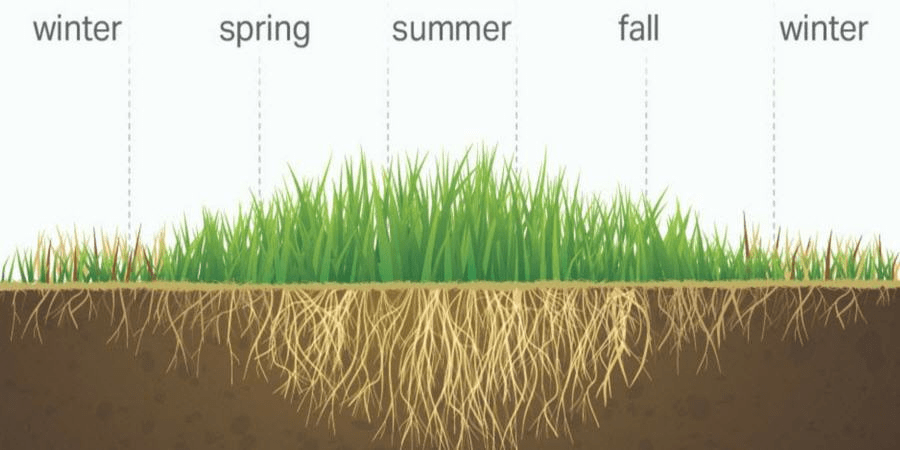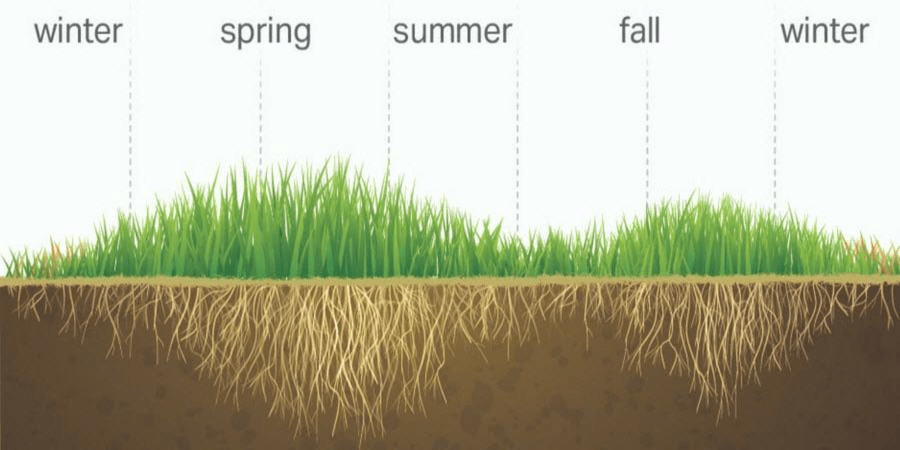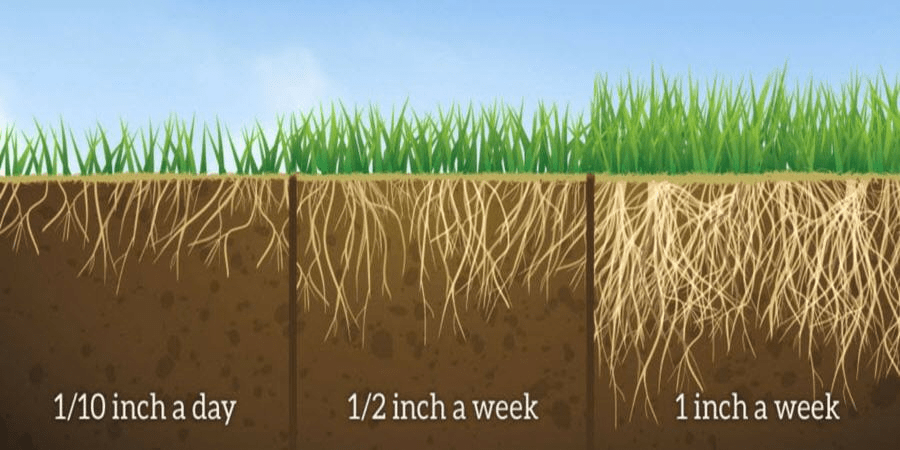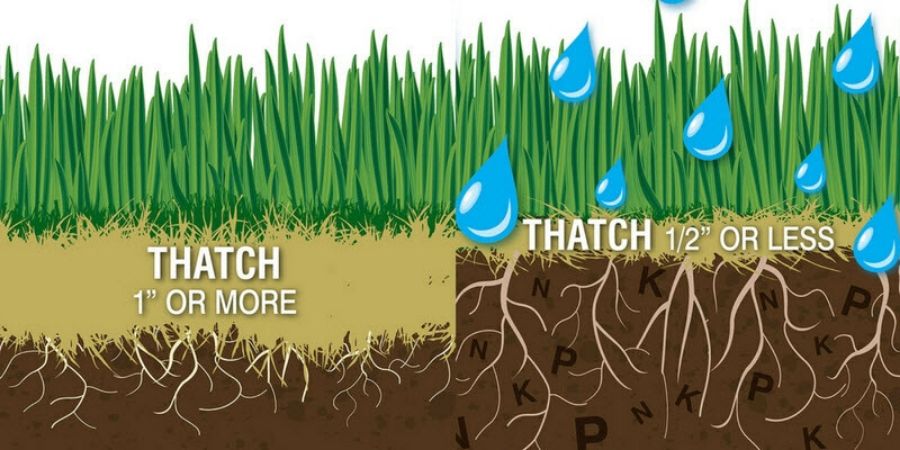Fall Lawn Growth Cycle
- Milorganite AgronomistSeptember 22, 2017
“Why?” The favorite question of young children. When it comes to lawn care, many homeowners ask the same question: Why are certain lawn-care practices done at one time of year and not others? When you understand what your lawn is doing throughout the year, it should make more sense as to why we recommend an annual lawn maintenance schedule, which corresponds to the natural growth cycle of your lawn.

Warm-Season (Southern) Annual Grass Growth Cycle
Lawn Growth and Maintenance in the Fall
What’s your lawn up to this fall? Daylight declines, your lawn is getting less sunlight, and producing less chlorophyll. It’s shutting down and preparing for winter dormancy.
When fall really begins in any region of the country varies widely. Technically fall begins with the autumnal equinox on or about September 22, but meteorological fall depends on annual temperature cycles. That’s the fall you know and what you need to consider when we’re offering fall lawn maintenance recommendations.

Cool-Season (Northern) Annual Grass Growth Cycle
Fall Lawn Fertilization
Your lawn needs fewer nutrients in late fall because it’s no longer actively growing. That’s why we recommend the first fall fertilizer application around Labor Day in the north and south. You’re giving your lawn its last boost to strengthen its roots well in advance of it going dormant. Fertilizing later in the season will encourage your lawn to grow when it’s preparing to go dormant. Fertilizing in the fall can actually be detrimental to a couple of varieties of warm-season grasses—Centipedegrass and Bahia. It’s important to know what variety of grass you have.
There’s one last time to fertilize in the fall called “dormant feeding,” which is done around Thanksgiving, just before the first freeze or snowfall in the north and after the lawn is dormant in the south, about October. Only use a slow-release fertilizer like Milorganite for dormant feeding; it’s not immediately fertilizing your lawn. It’ll remain on your lawn until growing conditions are right in spring. Applying quick-release fertilizer when your lawn isn’t taking up the nutrients may coax your lawn to grow and there’s the real risk of nutrient runoff.
Keep Watering Your Lawn
As long as your lawn is growing, it needs about one inch of water every week, either by rain or irrigation. At this time of year, your lawn is strengthening its root system, which helps it prepare for winter dormancy. In the south, if you don’t want your lawn to go completely dormant—brown—continue to water one inch every week.

Mow High. Mow Low.
As cooler fall temperatures arrive, change your cutting height to the highest possible setting. The longer height provides as much surface area for the grass to produce chlorophyll and nourish its roots. Once the lawn is dormant, drop the mowing height to 2” for northern grasses and 1” for southern grasses, since it’s no longer producing chlorophyll. Mowing low may also help control snow mold, prevalent in late-fall to mid-spring.
Managing Weeds in Your Lawn
If your lawn isn’t perfect and has a handful of weeds, our first choice is to pull them out by hand, roots and all. If there are more, spot spray with an herbicide. If your lawn is overrun by weeds (50-60%), then it might be time to consider starting over.
Herbicides work well in the fall for controlling weeds because, like grass, they’re focused on storing energy in their roots. This makes them more susceptible to post-emergence herbicides—those that kill weeds after they’re growing. There’s less opportunity for the herbicides to work effectively when the weeds aren’t actively growing.
Do your research before you go to your nearest big box store and buy a bag or jug of herbicide. Pick the wrong one and you could kill your entire lawn! Not all herbicides can be used on all varieties of northern or southern grass varieties, so it’s critical to know the type of grass you have. Also, know your weeds, so you can verify that the herbicide you choose kills them. Application is also dependent on temperature and moisture, so always follow the manufacturer’s application guidelines and safety precautions. Again, do it wrong and you run the risk of killing your entire lawn.
What is Thatch in the Lawn?
Thatch is the build-up of organic matter that forms a barrier between the blades of grass and its roots; it can inhibit water and nutrients from reaching the roots. It’s best to dethatch northern grasses in late summer to early fall while the grass is actively growing. This allows your lawn to recover before going dormant. If you wait until spring to dethatch in the north, you may damage tender shoots. It is best to wait until late spring to dethatch southern grasses.

Fall Lawn Diseases
Dethatching also helps keep two lawn diseases at bay: red thread and pink patch, which thrive in cool, overcast, wet weather, especially with extended periods of drizzle—a typical fall in many areas. These lawn diseases remain over-winter in thatch and organic lawn debris, so removing it now will help give your lawn a healthy start in spring, which is when these diseases become active.
Light to heavy shade and fall’s cool temperatures—spring’s cool temperatures, too—set the stage for powdery mildew to take hold, especially affecting Kentucky Bluegrass and sometimes fescues. You can use fungicides to handle the problem, but there are better long-term solutions. Fall is also a good time to reseed and overseed your lawn. Choose a grass variety that’s more shade-tolerant and mildew-resistant, such as improved Kentucky bluegrass cultivars and you’ll take care of the problem well into the future.
When we make lawn-care recommendations for certain times of the year it’s because your lawn is in a particular growth cycle and how it’s likely being impacted by the weather. There’s a reason. That’s the why.

